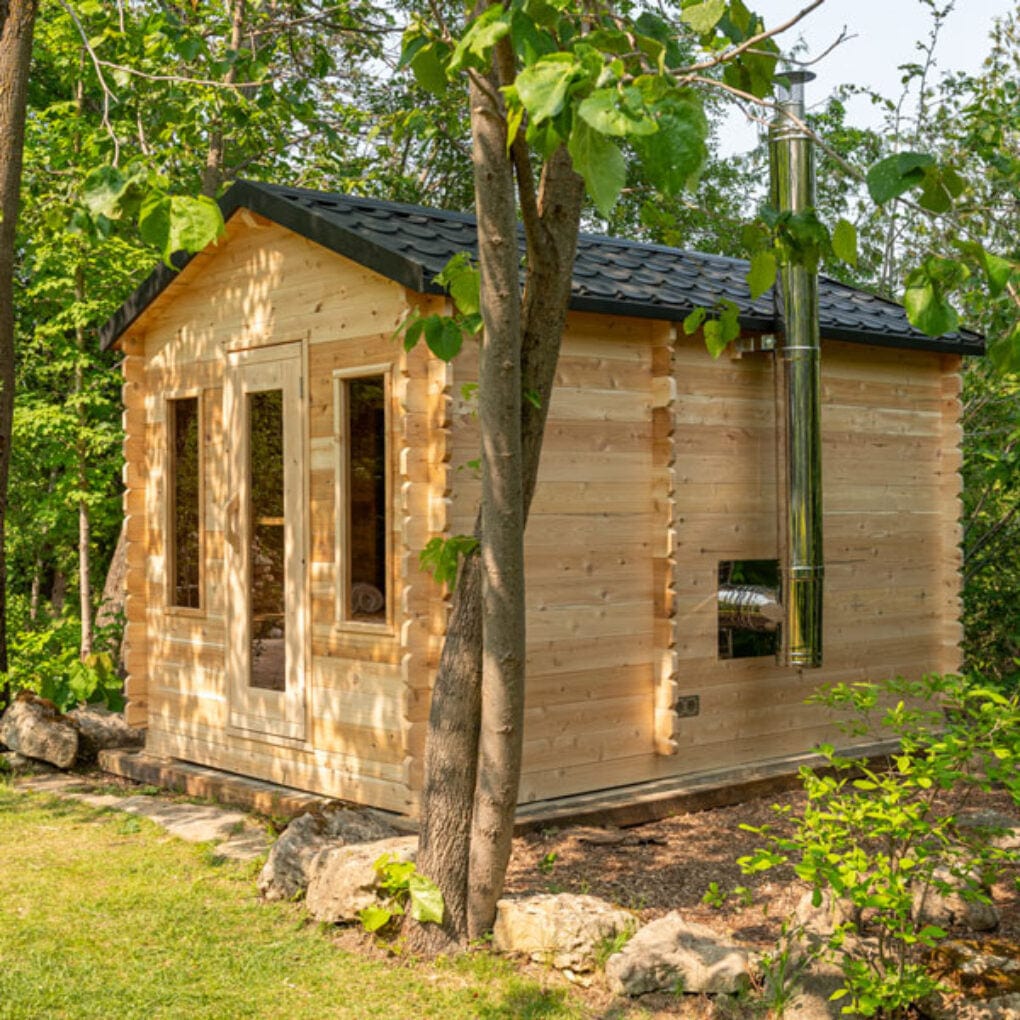The 7-Second Trick For Traditional Sauna
The 7-Second Trick For Traditional Sauna
Blog Article
What Does Traditional Sauna Mean?
Table of ContentsSome Of Traditional SaunaThe Single Strategy To Use For Traditional SaunaNot known Facts About Traditional SaunaAll About Traditional Sauna
The majority of the weight lost in a sauna is water loss and is re-gained upon rehydrating. Nonetheless, certainly sauna can be an integral part of a healthy weight reduction program. To check out the distinctions in between typical and IR saunas, I will certainly divide these into proven, theoretical, and fabricated distinctions.Hence, the best factor in the saunawhich goes to the ceiling directly over the sauna heateris usually between 185 and 190 F. Traditional Sauna. Claims that a standard sauna surpasses 200 F is merely not true and not suitable for electrical saunas sold in the United States. The temperature level for a far-infrared sauna is normally established between 120 and 140 F; however, unlike the typical sauna, the objective in and IR space is not to accomplish a high temperature
As a result of this, the temperature difference is virtually unimportant, considering that extreme sweating leads to both sauna types, but the approach of heating the body is different. In an IR sauna the bather will feel warm and will certainly sweat a lot, but at a lot lower temperatures. Hence, if the goal is to invest longer durations of time in the sauna, the IR sauna is an excellent choice.

Traditional Sauna for Beginners
When the high temperature level is accomplished, the aspects cycle on and off to keep the heat. Most typical sauna users delight in pouring water over the rocks to create heavy steam to elevate sauna humidity degrees. The advantages of pouring water over the rocks consist of: making the area extra comfy, dampening the nasal passages, and enabling the use of aromatherapy by mixing necessary oils with the water.
In a far-infrared sauna, the warm waves permeate the body to successfully heat up the body and elevate the body core temperature level. To accomplish this raised temperature level, Far-infrared emitters create infrared energy which is close to the exact same wavelength as that which the body naturally emitsoften referred to as the "Vital Array" of 7 to 14 microns), so the power is well obtained by the body.
When the power goes into the body, it triggers the body temperature level to raise and inevitably causes sweating. In an infrared sauna it's vital for the emitters/heaters to remain on practically continuously. Considering that there is no mass of rocks to keep heat, the sauna will cool down if the emitters turned off.
As mentioned over, the sauna bather in an infrared area wishes to place himself in front of operating emitters to obtain maximum take advantage of the warm. The heating time for both areas can be really different, depending on just how the spaces are utilized. For a typical sauna, a bather must allow 30-40 mins for the room to attain a desired temperature level and to appropriately pre-heat the rocks.
The Ultimate Guide To Traditional Sauna
A well built sauna will typically attain a temperature level of 150-160 F in about 30-40 minutes. For hotter temperatures, the area may require to warmth for a longer duration.
To some, 15 mins was "thrown away" while the infrared energy heated up the timber panels instead of warming a body, while others discover a pre-heated space to be a lot more comfy and think a raised beginning temperature level is necessary to begin perspiring. The length of recommended usage for each room is about the same (10-15 read this post here mins per session); however, due to the lower air temperature levels and the capability to really feel the impacts of infrared warm faster than a conventional sauna, it is not uncommon for a person to spend a total amount of 20-30 minutes in an infrared sauna.
Standard saunas have a tendency to be larger (therefore use even more electrical power) than infrared saunas, although conventional saunas are definitely readily available in one and two individual dimensions also. For a two-person standard sauna, 5x6 or 5x7 dimension is most prominent. The top bench can easily seat two or three people and is additionally long enough to relax throughout the sauna session.


The typical price per kWH of electrical energy in the U.S. is about $0.11, so a 4.5 kW heating system will set you back approximately $.50 to compete one hour, if the heating unit runs constantly for one hour. Commonly a sauna heater will certainly compete 75% of the initial hour and 50% of subsequent hours on since the components cycle once the established temperature is attained.
Traditional Sauna Can Be Fun For Everyone
A 2 person far-infrared area is usually physically smaller than a traditional sauna, usually concerning 4' x 4' or smaller. The IR heating unit is normally 1.5-1.7 kW using a 120 volt 15 amp plug-in solution. Considering that the space can be utilized sooner than a sauna area, we will assume the room is used for to of an hour consisting of warmth up time.
Ultimately, Recommended Reading there is a hardly ever discussed distinction in the social experience in between both rooms. While our culture has actually shed several of the social advantage of the typical sauna experience, it can be really socially gratifying. From family members time in the sauna, to heart-felt discussions with better halves, to sauna partiesthe standard sauna experience webpage can cause intimate mingling.
The majority of greater end infrared rooms include colored light therapy, stereo and full-glass fronts. The dimension of a lot of rooms allow for 2 people to conveniently use the area, while some styles may permit a 3rd or 4th individual to utilize the area. Custom infrared areas are likewise offered, with area dimensions offered approximately 7' x 8' x 7' high.
Report this page